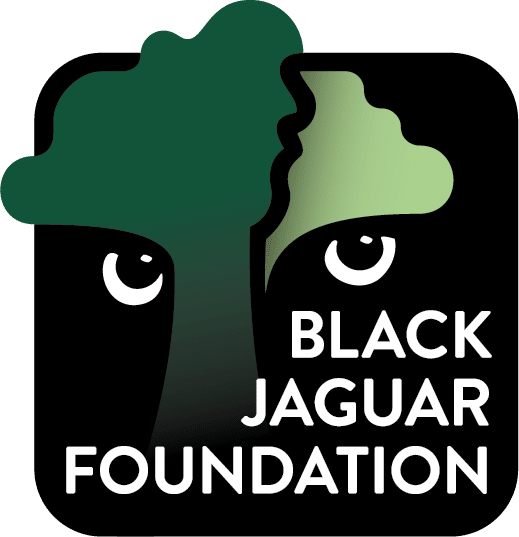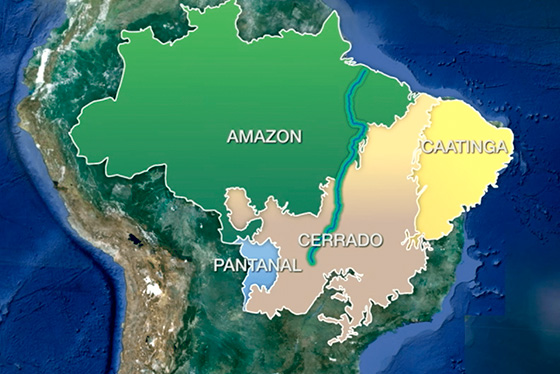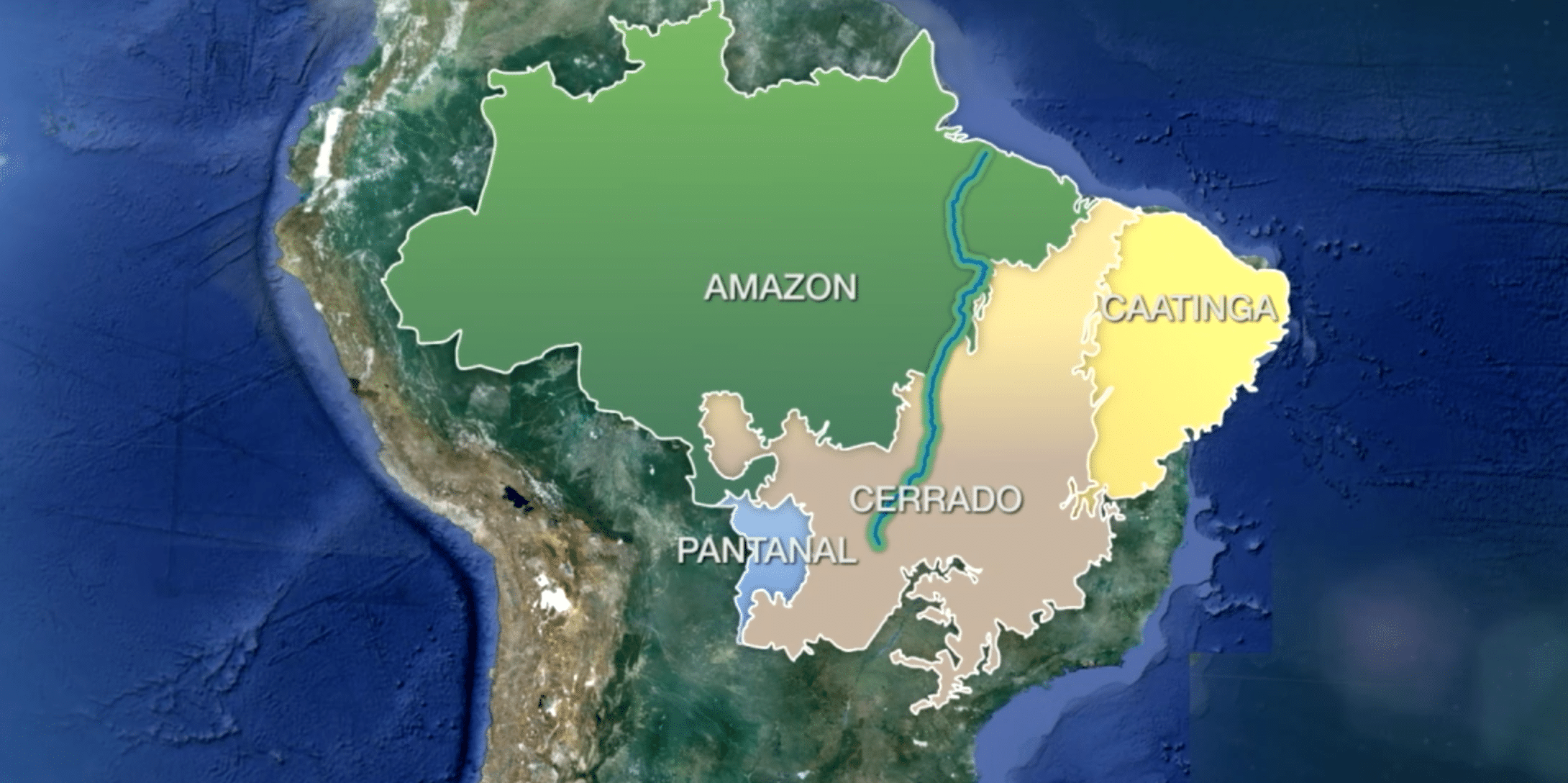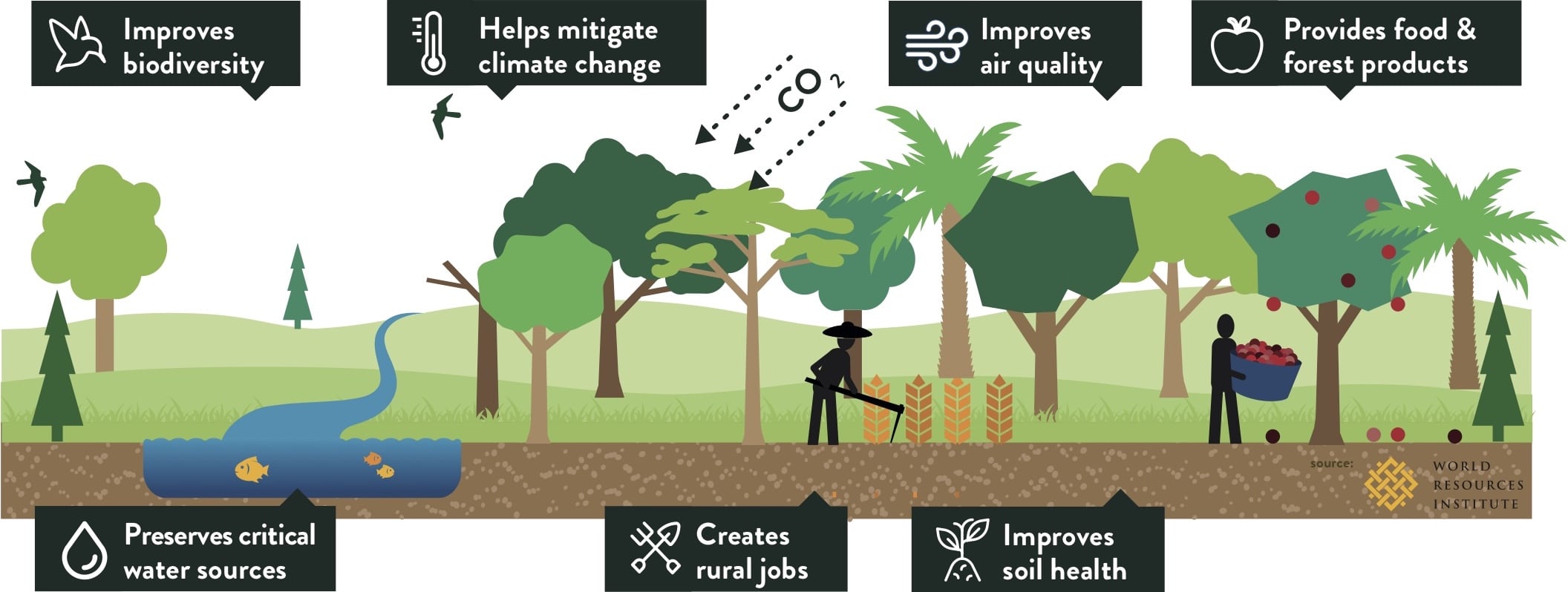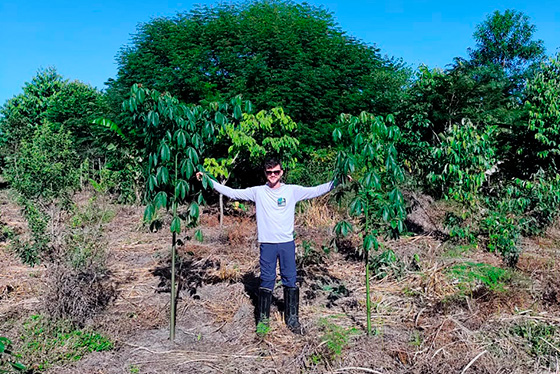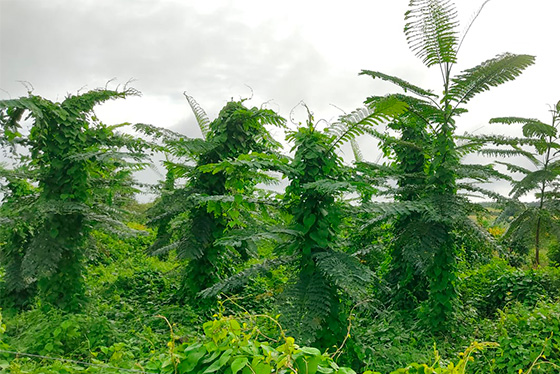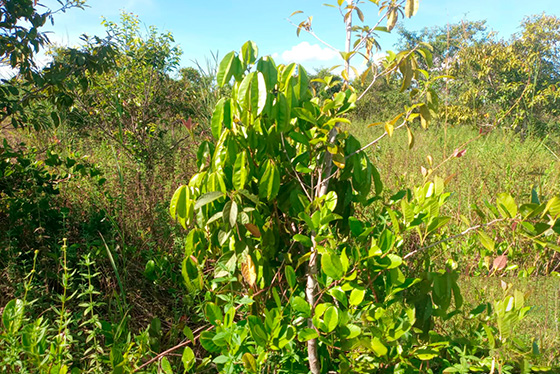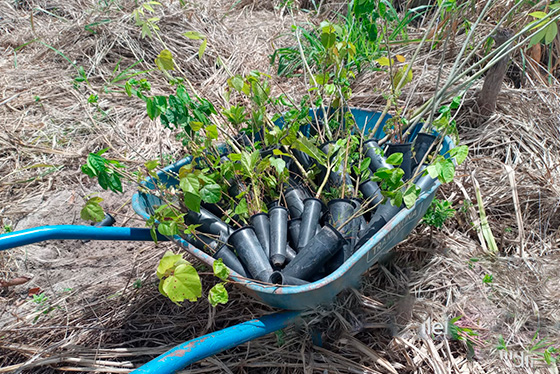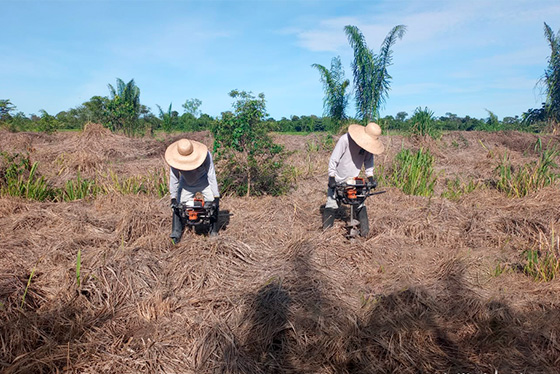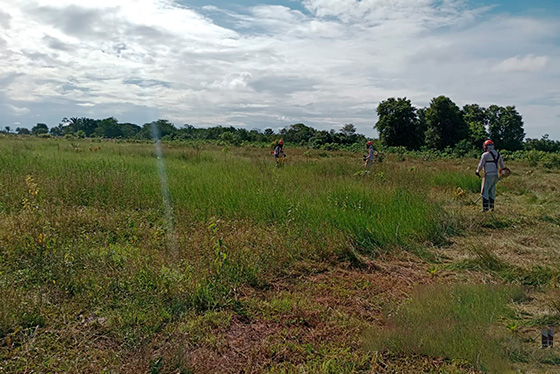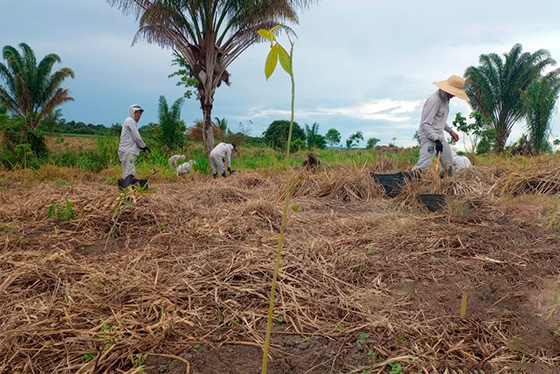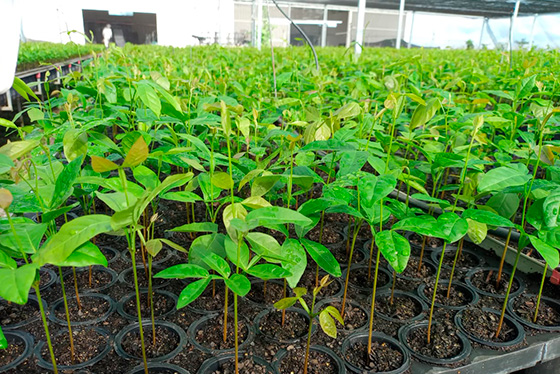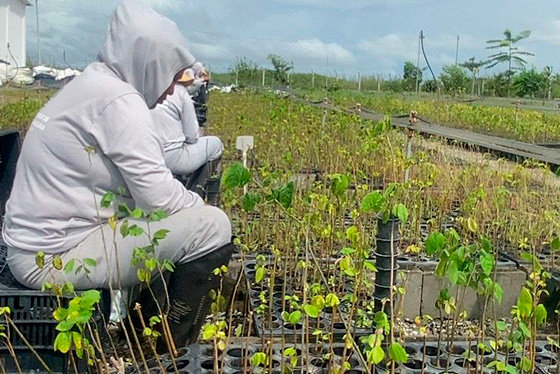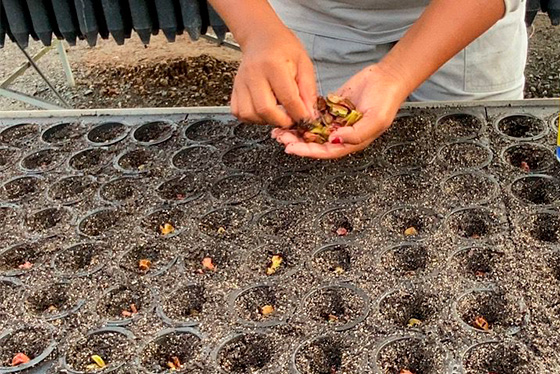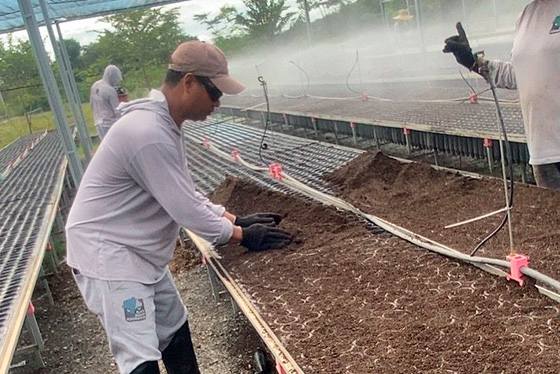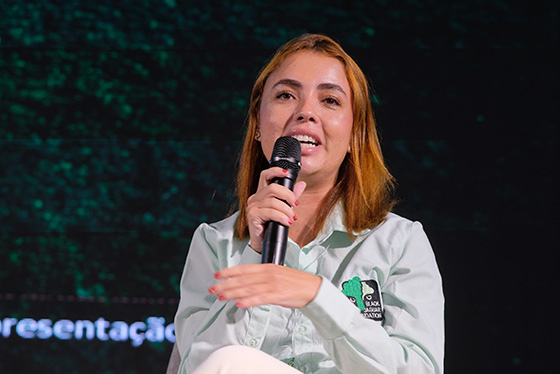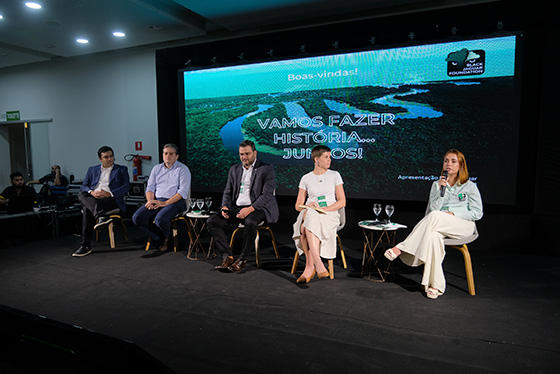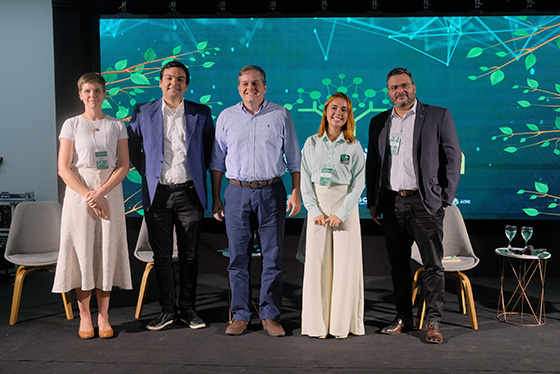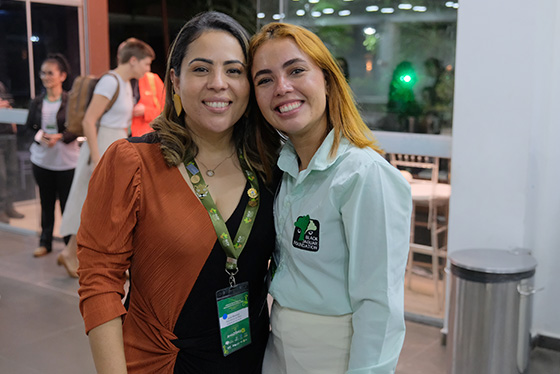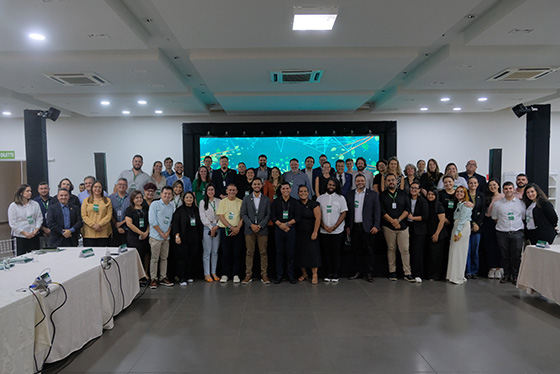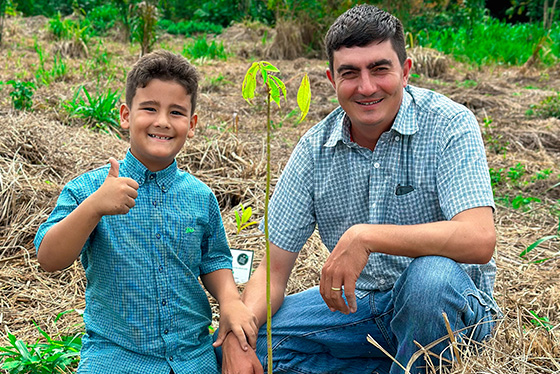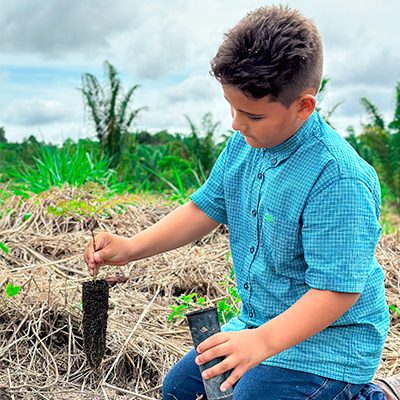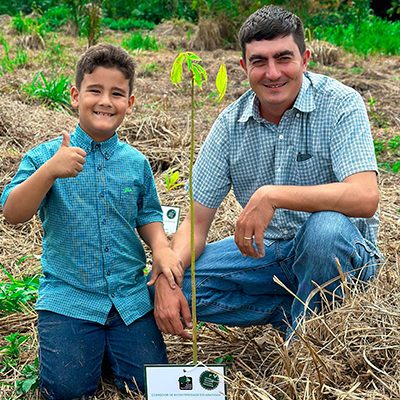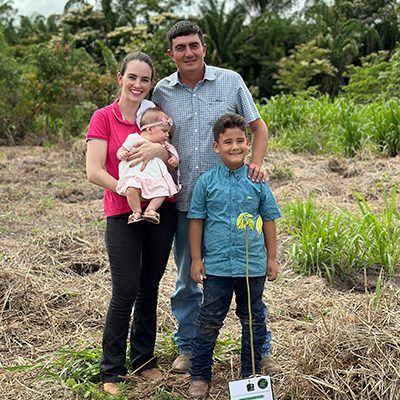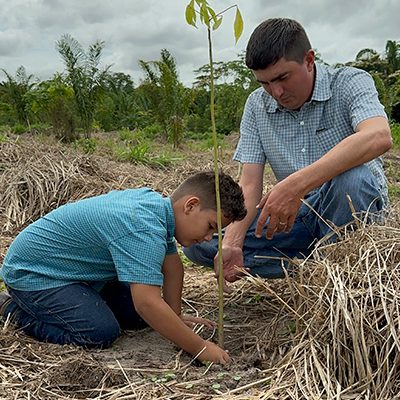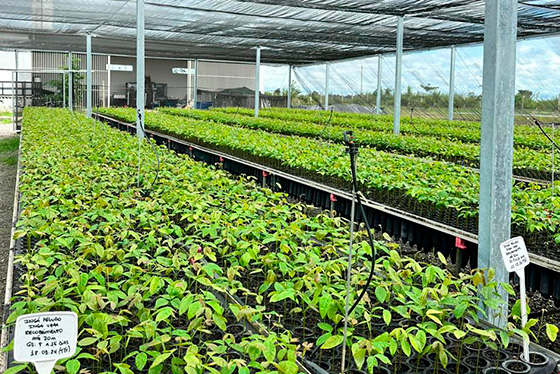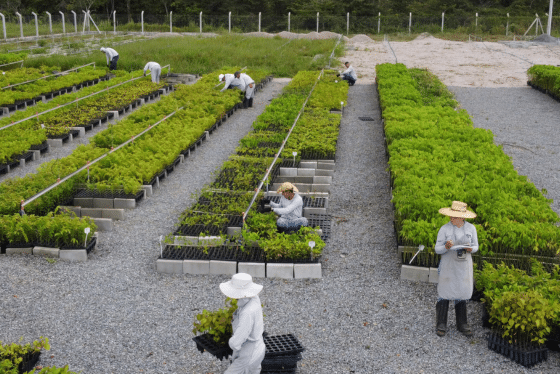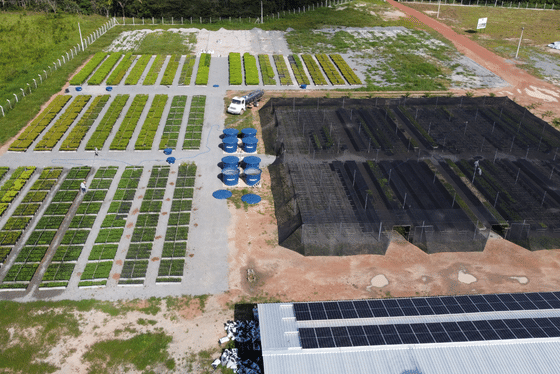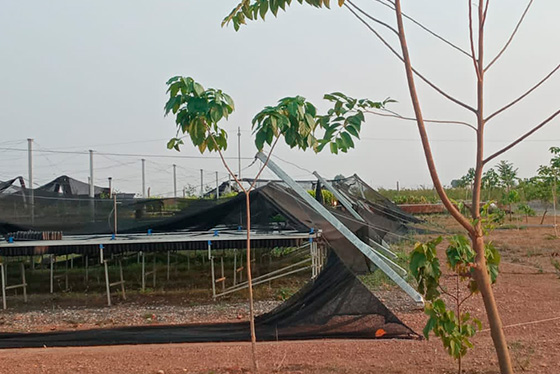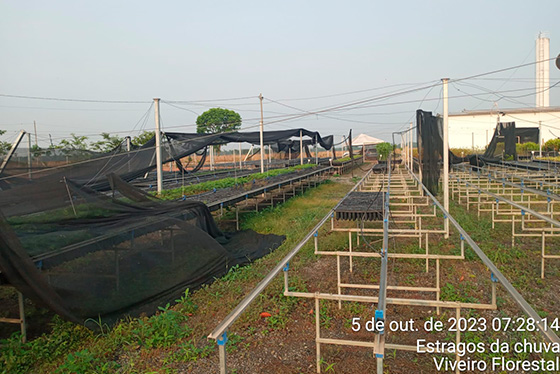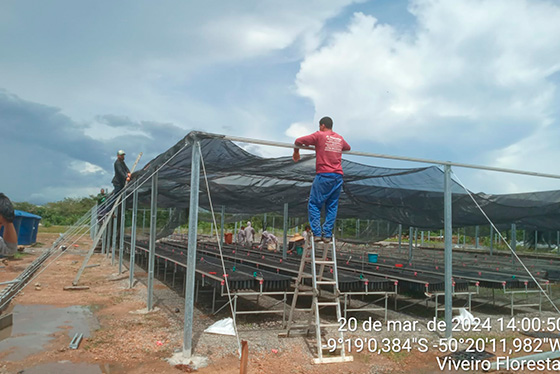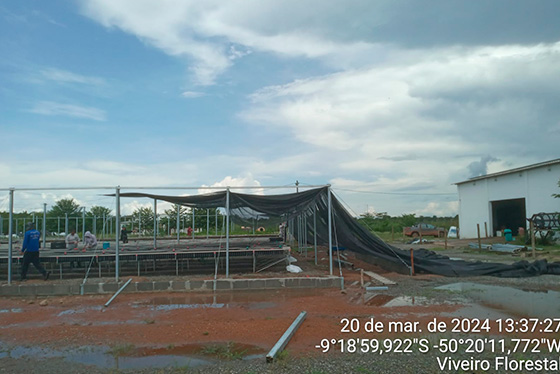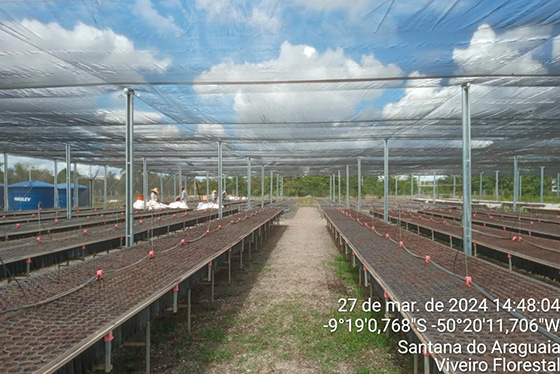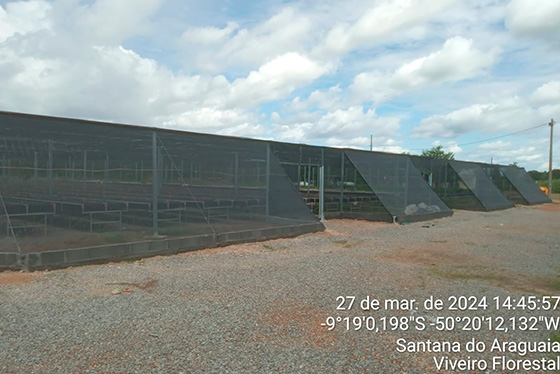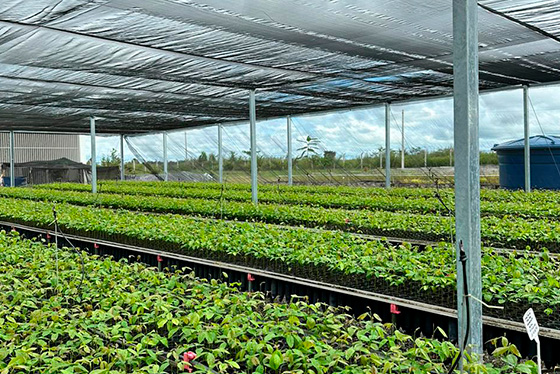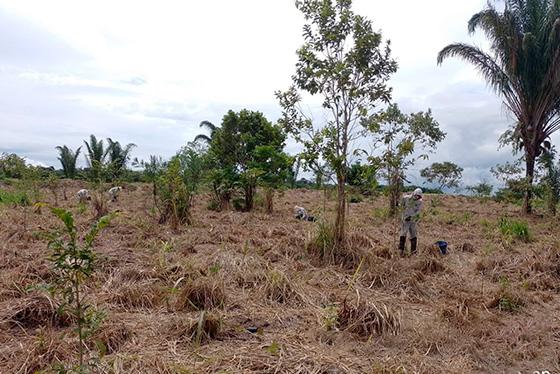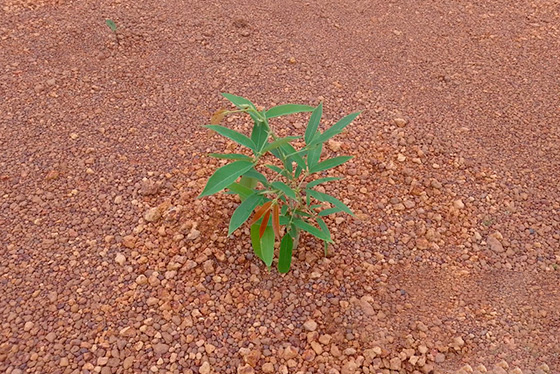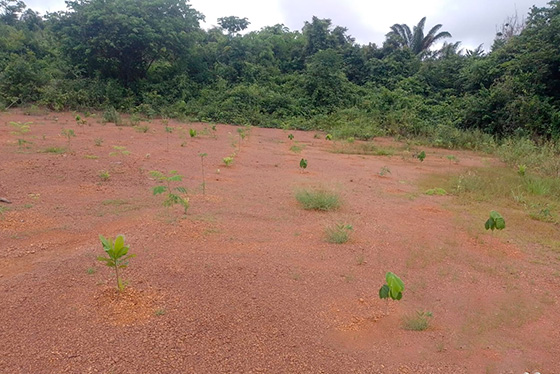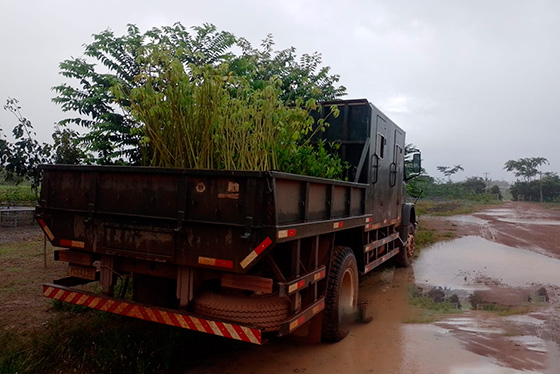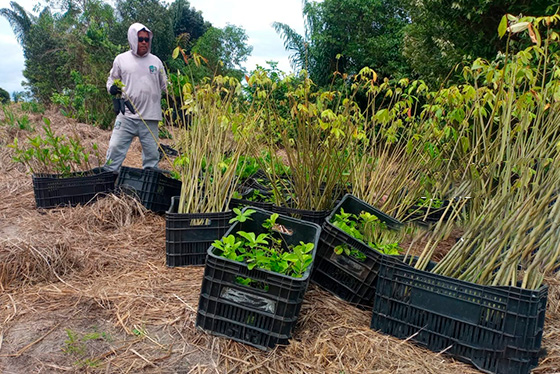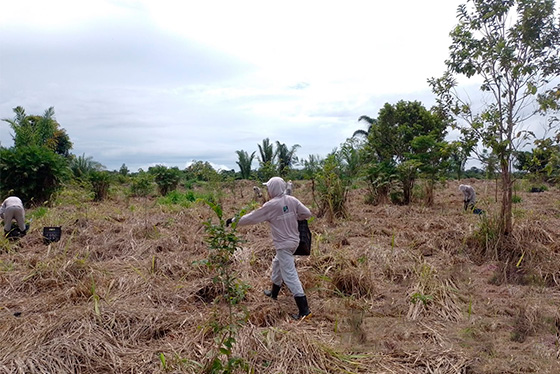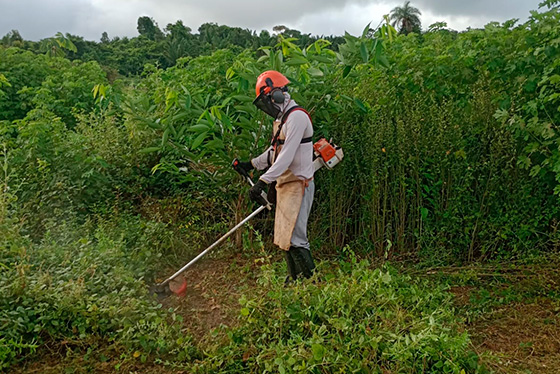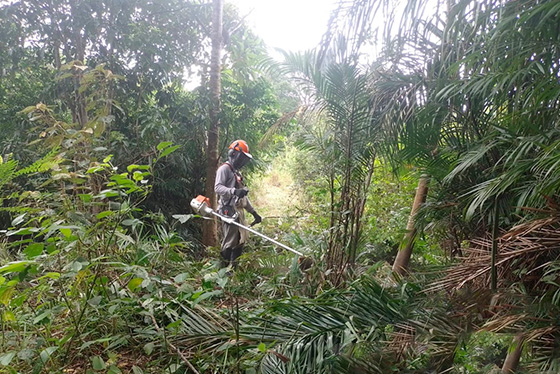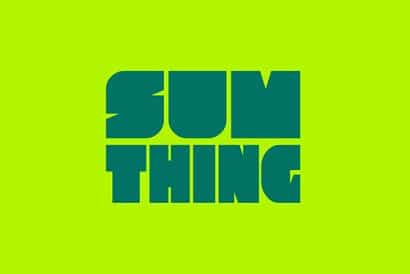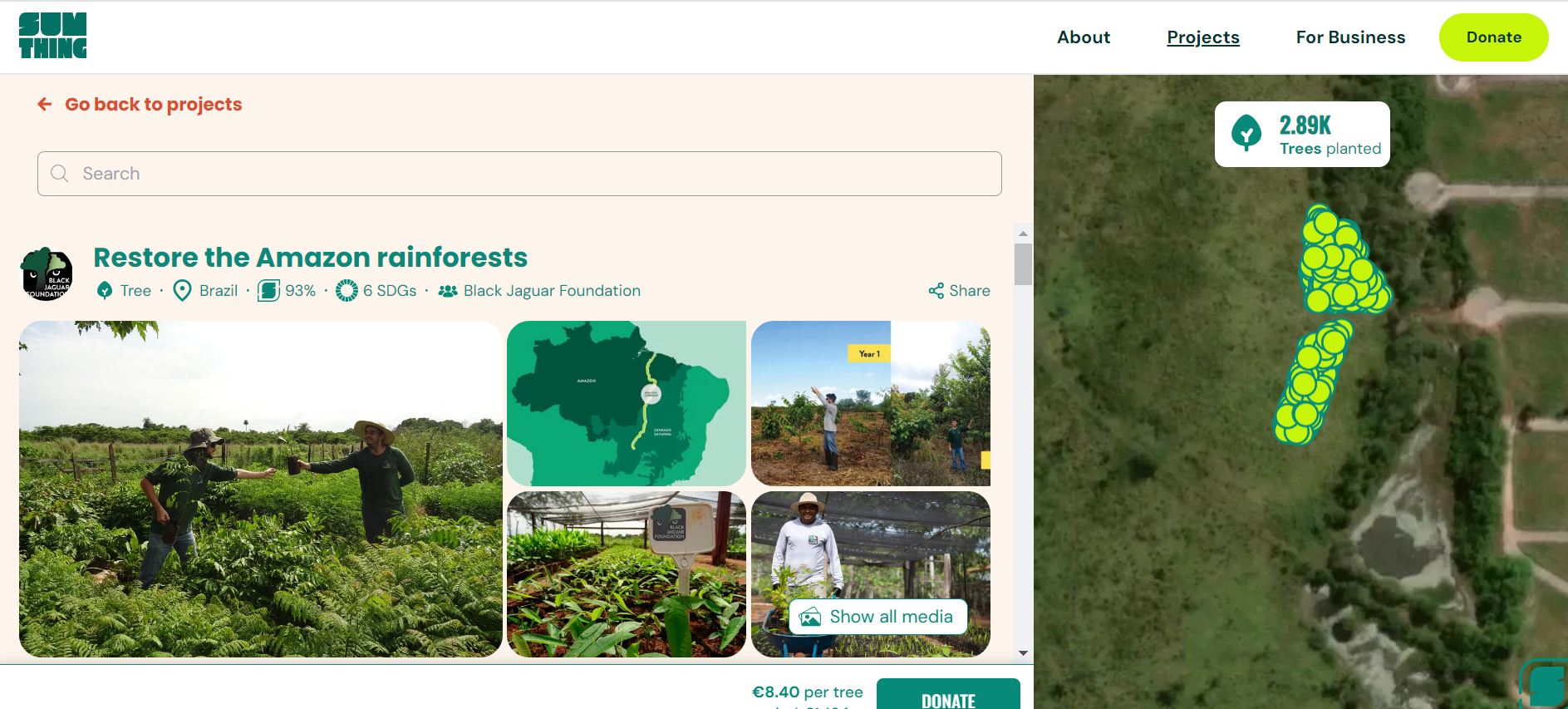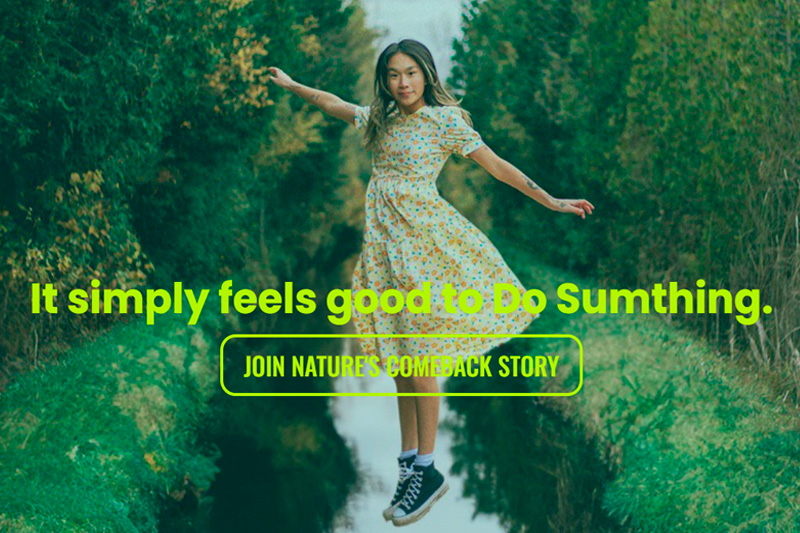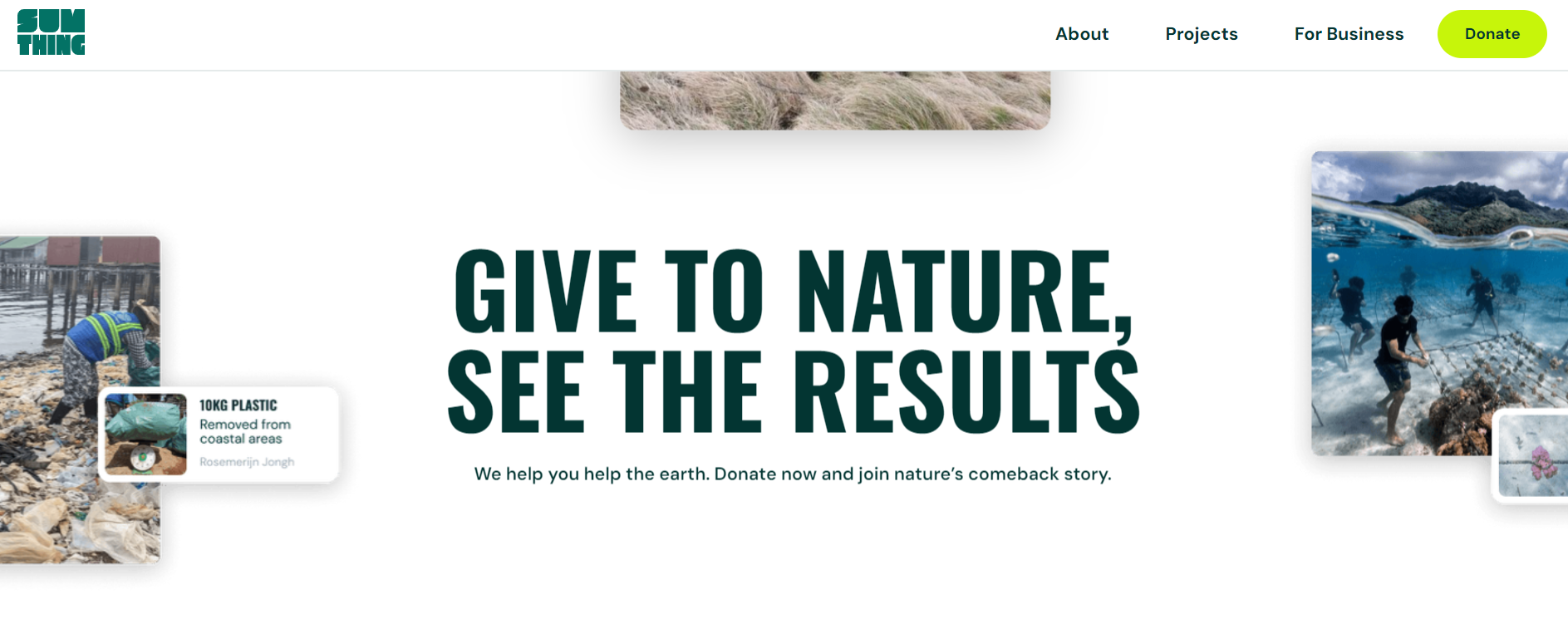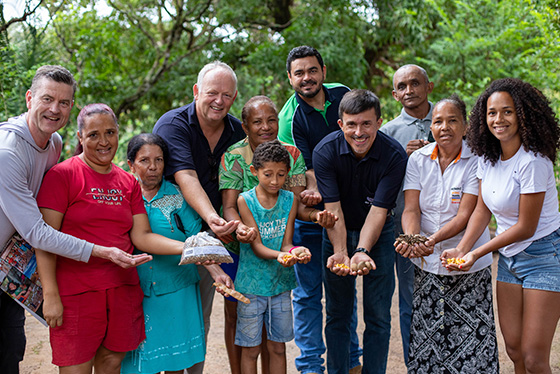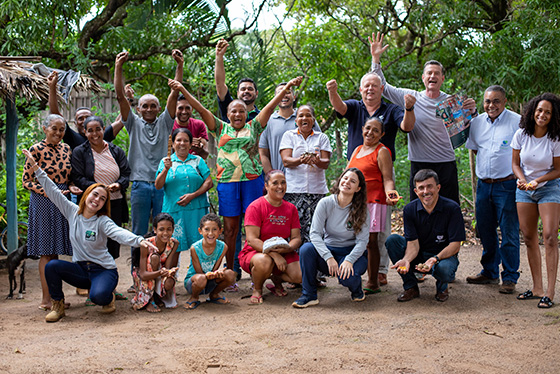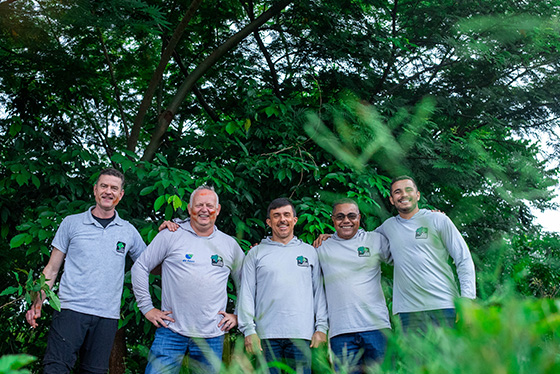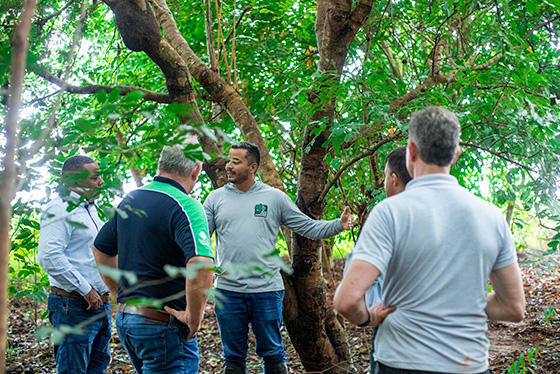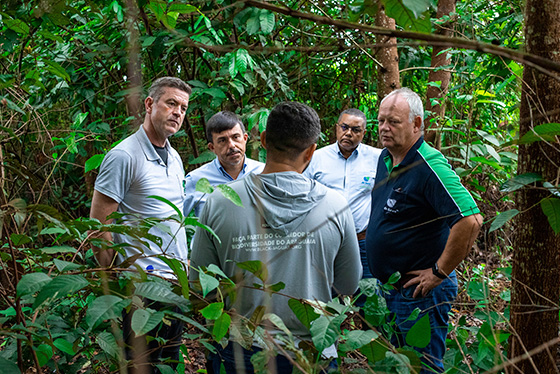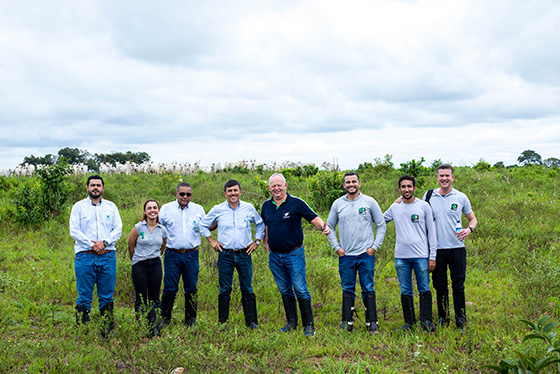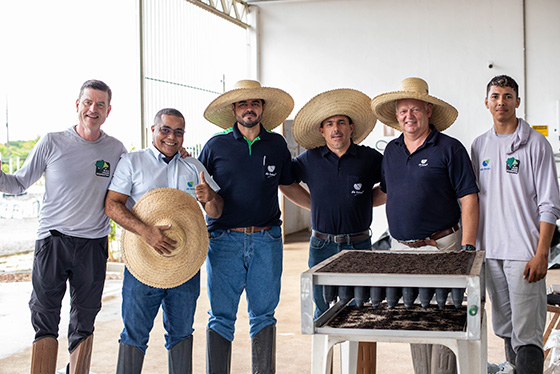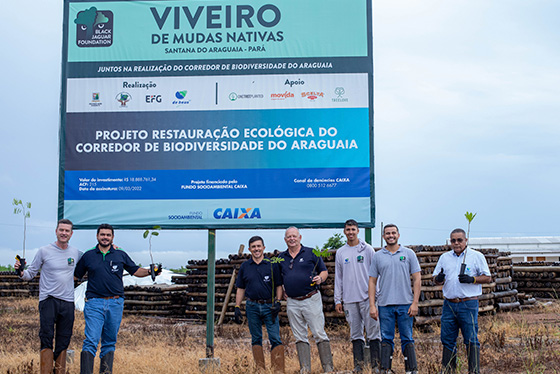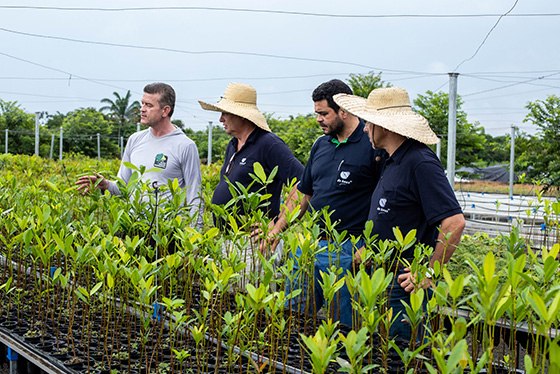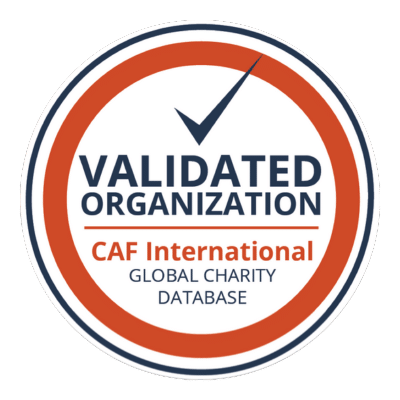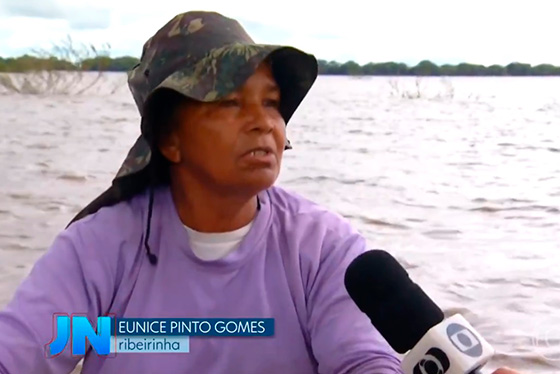
The importance of preserving the Araguaia River was highlighted in the most watched brazilian newscast – and Dona Eunice, collector of Ressemear, too!
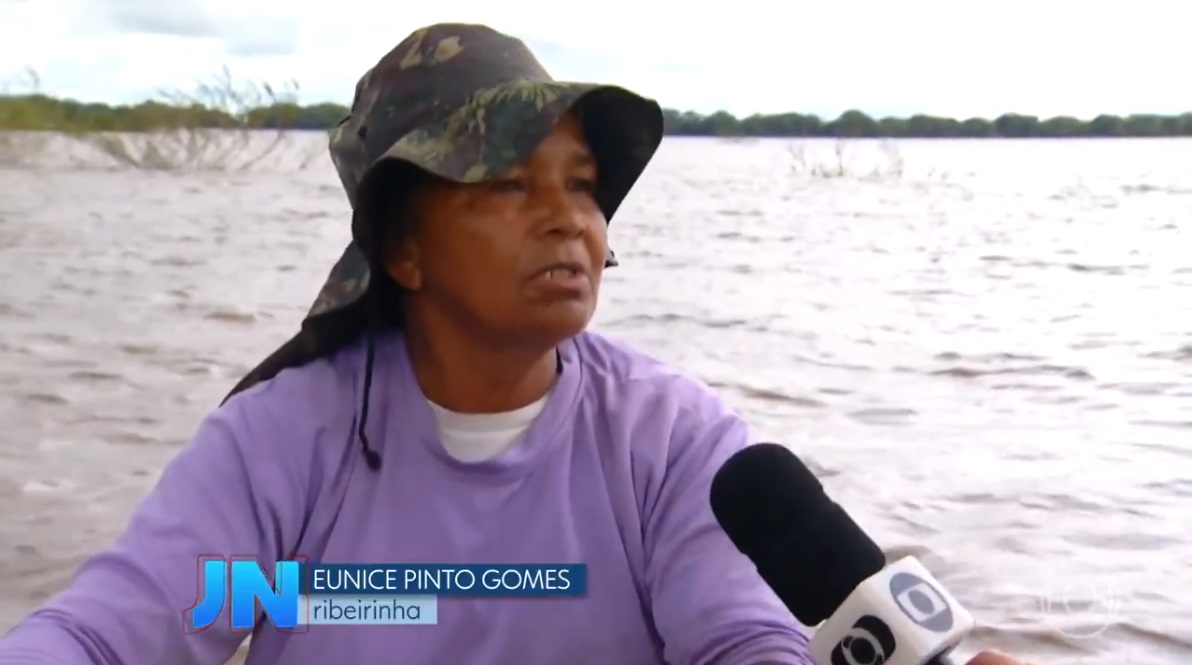
An active collector of Ressemear (Araguaia Seed Network), Dona Eunice was one of those interviewed by the team of journalists and highlighted the importance of ecological restoration to preserve and recover the Araguaia River:
“Man deforested, took away the rain, because you know that if the trees are gone, the rain also decreases. Our interest is that they come and reforest, because then the rain comes and there is no shortage of water in this river”, he explains.
As she told the report, Dona Eunice lives on the banks of the Araguaia River and goes out on a boat every week looking for fish to eat and to sell. And over the years, he realized that the area around the river is undergoing changes.
And it is to change this story that the Black Jaguar Foundation has been working for more than 5 years to restore the banks of the Araguaia River and, in this way, create one of the largest ecological corridors in the world: the Araguaia Biodiversity Corridor. And Dona Eunice is part of this initiative – she is one of the collectors of Ressemear, a seed network mobilized by the organization.
The project began with the objective of acquiring native seeds that could be used for planting seedlings and direct sowing. After mobilizing communities and offering training, she and her family learned how to collect and store the most different species of seeds from the Amazon Forest and Cerrado to then sell to the organization.
See what she says about the importance of the work carried out in partnership with the Black Jaguar Foundation:
Importance of preserving the Araguaia River
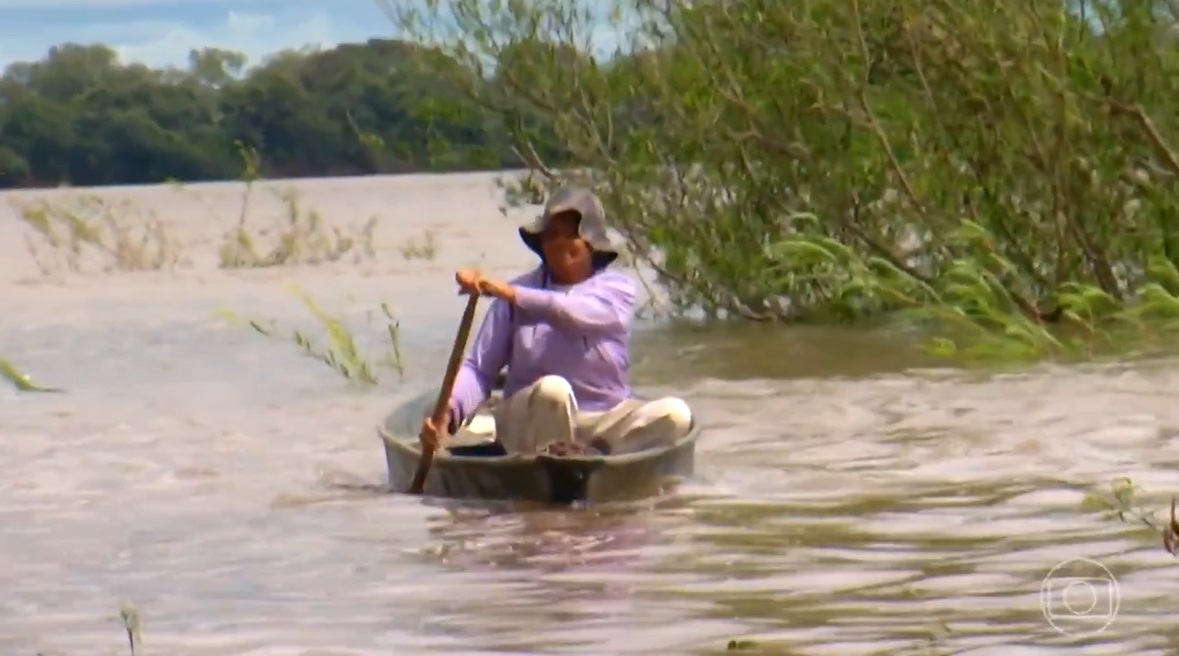
According to recent studies, with each passing year, one of the most important river basins in Brazil is having difficulty recovering water flow during rainy periods.
And as Dona Eunice said, the solution to recovering the Araguaia River and its tributaries is to restore the Amazon Forest and the Cerrado – and that is what the Black Jaguar Foundation works for every day!
And you can support our project: donating trees, sharing our content or becoming part of the First 600 helps us expand the Black Jaguar Foundation Community. Together, we can recover the Araguaia River, the Amazon Forest and the Cerrado!
